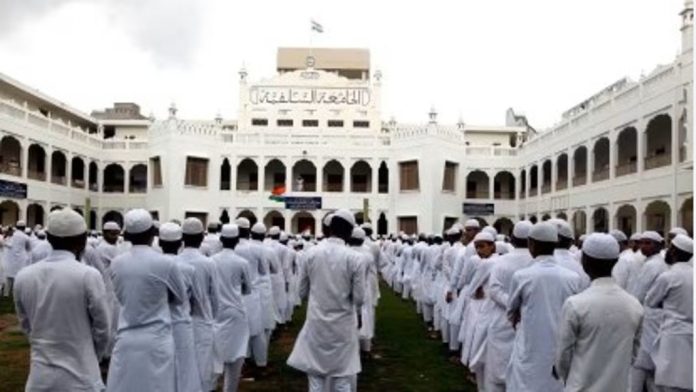A recent study conducted by Sabir Ahamed, National Research Coordinator at Pratichi Institute (founded by Nobel Laureate Amartya Sen), and Dipparna Jana, Assistant Professor at St. Xavier’s University, Kolkata, aims to dispel widespread myths about madrasa education in India. Utilising data from the Unified District Information System for Education (U-DICE), the researchers challenge the negative stereotypes often associated with these institutions.
Sabir Ahamed, speaking to Radiance, emphasised that dismissing madrasa education as a violation of child rights is a significant oversight.
“Madrasa education plays a crucial role in providing access to education for marginalised communities,” he stated.
Ahamed argued that madrasas help preserve India’s cultural diversity and protect minority rights to manage their own educational institutions. He noted that states like Uttar Pradesh and Assam have tried to dismantle madrasas, labelling them as religious schools, often fuelled by unfounded accusations linking them to extremism.
Dipparna Jana highlighted the historical roots of madrasas in India, citing one of the earliest institutions in Sitapur, West Bengal, established in 1751. She pointed out that the Calcutta Madrasa, founded in 1780, offered courses on human anatomy long before the establishment of Presidency College, showcasing a commitment to diverse academic disciplines.
Jana explained that in West Bengal, madrasas are categorised as junior, higher secondary, and senior madrasas, with around 614 recognised by the West Bengal Board of Madrasah Education. These follow a curriculum similar to the state board, countering the misconception that madrasas solely focus on religious education.
The researchers utilised U-DICE data to debunk common stereotypes. Ahamed noted that contrary to popular belief, madrasas are not attended exclusively by Muslim boys, nor do they limit their teaching to Islamic studies. The study revealed diverse enrolment demographics and subjects taught, demonstrating a broader educational approach.
The study tracked enrolment data from 2011-2021. In 2011-12, the total enrolment in recognised madrasas was 415,200, increasing by 25.6% to 521,523 by 2015-16, and reaching 545,903 by 2021. The data also showed a notable rise in non-Muslim enrolment, particularly among SCs and STs. In 2011-12, there were 15,762 non-Muslim students enrolled, which grew by 28.12% to 20,195 by 2015-16.
The study observed an intriguing trend in the gender balance of enrolments. Following a pattern highlighted in the Sachar Committee Report, the number of girls enrolling in madrasas has been increasing since 2006. In state-funded madrasas during the 2011-12 academic year, 60% of the students were girls. By 2015-16, this percentage rose to 62%, indicating a higher enrolment rate for girls compared to boys.
Despite positive trends in the early years, the study noted a decline in overall madrasa enrolment by the 2020-21 academic year. The highest enrolment was observed at the secondary level, reaching 4.45%.
Ahamed and Jana concluded that dismissing madrasa education based on unsubstantiated claims of child rights violations is a significant error.
“Madrasa education provides essential access for marginalised communities, preserves cultural diversity, and affirms minority rights to manage their educational institutions,” they reiterated.
Their findings challenge the negative perceptions surrounding madrasas and highlight the vital role these institutions play in India’s educational landscape.




